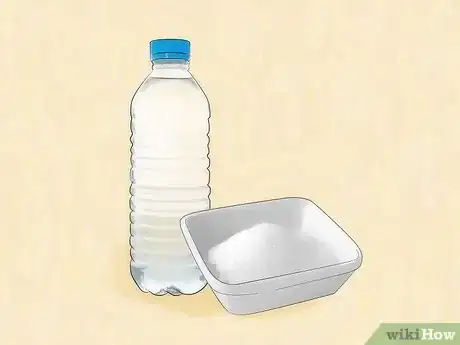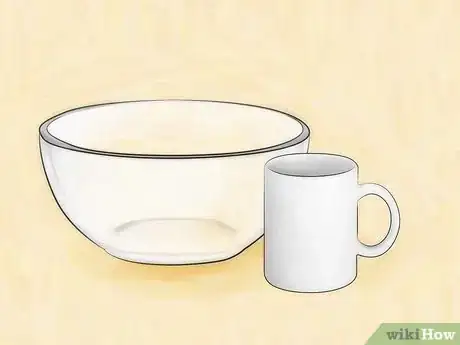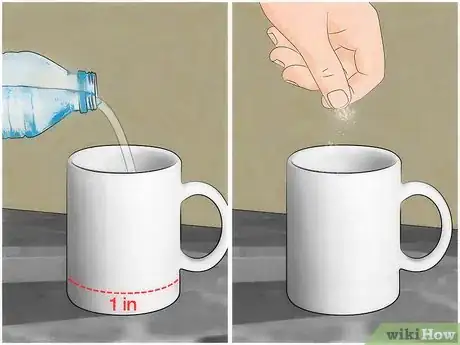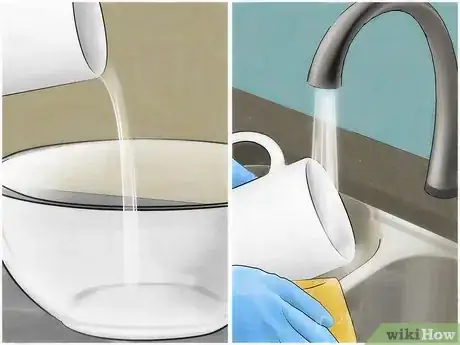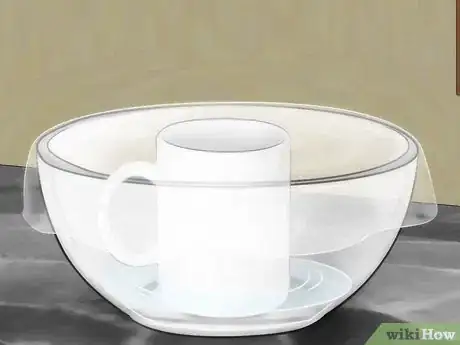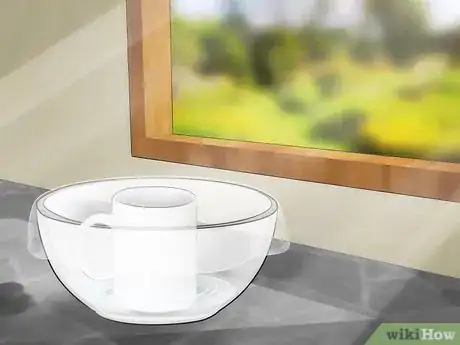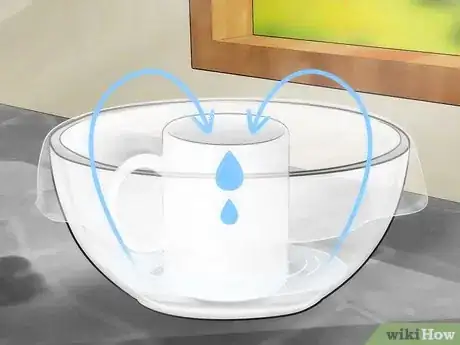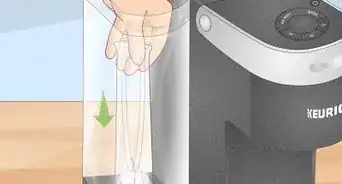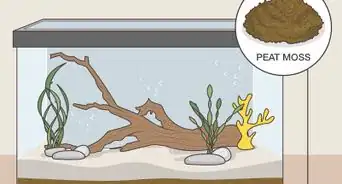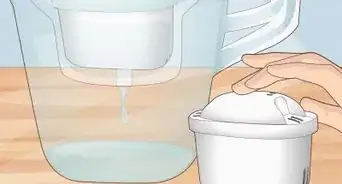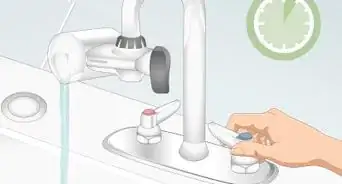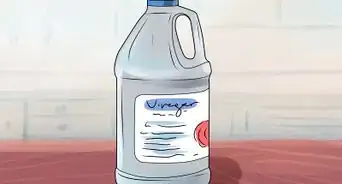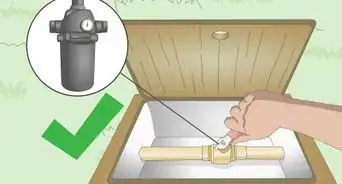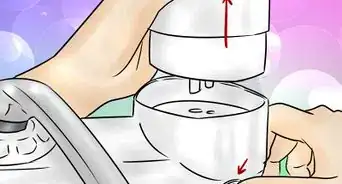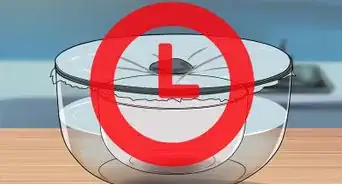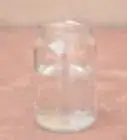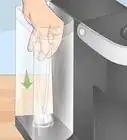wikiHow is a “wiki,” similar to Wikipedia, which means that many of our articles are co-written by multiple authors. To create this article, 48 people, some anonymous, worked to edit and improve it over time.
wikiHow marks an article as reader-approved once it receives enough positive feedback. In this case, 84% of readers who voted found the article helpful, earning it our reader-approved status.
This article has been viewed 407,332 times.
Learn more...
Desalination, or the removal or salt from water, can be used to produce drinkable water from seawater or brackish water.[1] Scientists are studying ways to use desalination on a global scale, but you can desalinate water yourself with just a cup, a bowl, and some sunlight. This process of desalination is called distillation. It can be used to remove many impurities, because just the water is evaporated and dissolved solids are left behind.
Steps
Gathering Your Materials
-
1Use water and salt. Before you can desalinate the water, you will need to create saline water, or salt water. You can use tap water, or saltwater if available.[2]
- If you happen to live near an ocean, you can skip these materials and fill a bottle with seawater. Seawater is full of salt and great for use in the desalination process.
-
2Get a large bowl and a cup or container. You will use this container to collect the condensed water and the large bowl will hold the salt water. The bowl should be big enough to fit the container with room to spare above.[3]
- You will also need some of plastic cling wrap, or other clean covering, to cover the bowl, and a small weight like a rock.
Advertisement -
3Place the bowl in direct sunlight. like a window sill or garden. [4]
Making the Desalination Device
-
1Pour water into the bowl. You do not need to fill the bowl up too much, just until it appears 1 inch deep with water.[5]
- Mix enough salt into the water so it tastes salty. Start with a small amount of salt and taste just a drop to ensure it is salty.
- Put the salt water into the large glass bowl. You will then need to rinse and dry the mug to ensure there is not salt residue in the mug.[6]
- Once you have rinsed and dried the mug, you can put it in the center of the glass bowl in the 1 inch of salt water.
-
2Cover the glass bowl with plastic cling wrap. Make sure the cling wrap is stretched tightly over the mug and the sides of the bowl, with no open areas around the rim of the bowl.
-
3Place the bowl in direct sunlight. Look for a window sill or a spot on your deck outside that gets lots of direct sunlight and make sure the bowl is on a nice, even surface in the sun.[7]
- Place the small weight or rock on the top of the cover, right above the cup. The plastic wrap should sag in the center of the cup due to the weight of the rock. This will ensure the condensed water falls into the cup so you can drink it.
-
4Leave the bowl in the sun for three to four hours. After several hours in the sun, the evaporated water rises. This will lead to the formation of water droplets on the cover. The water droplets should then drip from the point of the weight, into the cup.
-
5Check the cup for fresh water. After the bowl has been in the sun for three to four hours, check the cup for a small amount of water. Remove the plastic wrap and drink the water in the cup. You should taste nothing. This is pure, distilled water. [8]
- This desalination device works by using the sun to warm up the salt water. The plastic wrap helps to trap the water vapors in the bowl as the salt water evaporates. Because the top of the plastic wrap is much cooler than the rest of the bowl, the humid air in the bowl condenses on the top of the plastic wrap and forms water droplets.
- Over time, the water droplets on the plastic wrap grow larger and start to flow to the center of the bowl due to the weight of the rock. As the water droplets build up, they grow heavier and eventually fall into the cup. The result of this simple desalination device is a cup of fresh drinking water that does not contain any salt.
Community Q&A
-
QuestionInstead of letting the sun do all the work, can I boil the water?
 Community AnswerThat's essentially what large desalination plants do. Just keep in mind the heat so you don't melt any plastic.
Community AnswerThat's essentially what large desalination plants do. Just keep in mind the heat so you don't melt any plastic. -
QuestionWhat happens to the salt?
 Community AnswerThe salt remains in solution in the larger bowl, just in greater concentrations. If the concentration becomes high enough, it will precipitate (i.e., form solid salt) in the bottom of the bowl.
Community AnswerThe salt remains in solution in the larger bowl, just in greater concentrations. If the concentration becomes high enough, it will precipitate (i.e., form solid salt) in the bottom of the bowl. -
QuestionWhat happens if you leave it out for more than three or four hours?
 Community AnswerNothing bad will happen to the water if you wait longer than three or four hours.
Community AnswerNothing bad will happen to the water if you wait longer than three or four hours.
Things You'll Need
- Salt
- Water or seawater (if available)
- A large bowl
- A cup or small container
- Cling wrap, or another clean cover
- A small weight, like a rock
References
- ↑ https://water.usgs.gov/edu/drinkseawater.html
- ↑ http://www.sciencefairadventure.com/ProjectDetail.aspx?ProjectID=155
- ↑ http://www.sciencefairadventure.com/ProjectDetail.aspx?ProjectID=155
- ↑ http://water.usgs.gov/edu/drinkseawater.html
- ↑ http://www.sciencefairadventure.com/ProjectDetail.aspx?ProjectID=155
- ↑ http://www.sciencefairadventure.com/ProjectDetail.aspx?ProjectID=155
- ↑ http://www.sciencefairadventure.com/ProjectDetail.aspx?ProjectID=155
- ↑ http://www.sciencefairadventure.com/ProjectDetail.aspx?ProjectID=155
About This Article
To desalinate water, pour a small amount of saltwater into a large glass bowl with a coffee mug in the center. Cover the bowl with plastic wrap, making sure it’s sealed tightly, and place a small weight or rock on the plastic right above the glass mug. The weight will hold the plastic wrap in place and will create a low point where the fresh water can drip into the coffee mug as it condenses on the plastic. Once you've set up your desalination device, place the bowl in direct sunlight for 3-4 hours, then check the mug to see if it contains any fresh water. Keep reading to learn how condensation desalinates the water in the mug!
